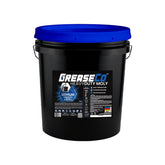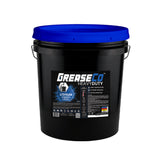Does Grease In A Tube Go Bad? Can Grease Go Bad Over Time? - Understanding Grease Shelf Life
With proper storage, grease shelf life is often considered around 5 years by most industry experts. Can grease go bad over time? The answer is yes, grease can degrade over time, and its shelf life depends on various factors, including its composition, storage conditions, and the environment in which it's kept. When it comes to maintaining machinery, vehicles, or any equipment that requires lubrication, the quality of the grease used plays a pivotal role in ensuring smooth and efficient operation.
Factors Influencing Grease Shelf Life
Grease is a complex mixture consisting of a base oil, thickener, and various additives designed to enhance its properties. Over time, these components can undergo physical and chemical changes, leading to a deterioration in the grease's performance. Factors such as exposure to extreme temperatures, humidity, and contamination can accelerate these changes, reducing the grease's effectiveness and potentially causing damage to the machinery it's intended to protect.
Best Practices for Prolonging Grease Shelf Life
To maximize the shelf life of grease and ensure its optimal performance, consider the following best practices:
-
Proper Storage: Store grease in a cool, dry place away from direct sunlight and extreme temperature fluctuations. Ideally, the storage area should be temperature-controlled to prevent the grease from becoming too hard or too soft.
-
Sealed Containers: Keep grease in its original container with the lid tightly sealed to prevent contamination from dust, moisture, and other contaminants. Once opened, use the grease within a reasonable timeframe.
-
Avoid Mixing Greases: Different greases can have incompatible thickeners or additives. Mixing them can lead to changes in consistency and performance. Always use the same type of grease for a specific application unless completely purging the old grease.
-
Regular Inspections: Check the condition of stored grease regularly. Look for signs of separation, changes in texture, or any unusual odors, which could indicate that the grease is no longer suitable for use.
-
First-In, First-Out Policy: Rotate your grease inventory to ensure that older stocks are used before newer ones. This practice helps in minimizing the chances of grease expiring before it is used.
Signs That Grease Has Gone Bad
It's important to recognize the signs that indicate grease is no longer suitable for use:
-
Separation of Oil and Thickener: If you notice oil pooling on the surface of the grease, it's a sign that the components have begun to separate, compromising its consistency and lubricating properties.
-
Change in Texture: Grease that has hardened or become too soft compared to its original consistency may not perform as intended.
-
Discoloration or Unusual Odor: Any significant change in the color or smell of the grease can indicate chemical changes that may affect its performance.
In conclusion, while grease does have a shelf life of about 5 years, proper storage and handling can significantly extend its usability. By adhering to best practices for storage and usage, you can ensure that your grease maintains its integrity and continues to protect your machinery efficiently. Always consult the manufacturer's recommendations for specific storage guidelines and shelf life information to ensure the best care for your lubricants.







Leave a comment
Please note, comments need to be approved before they are published.